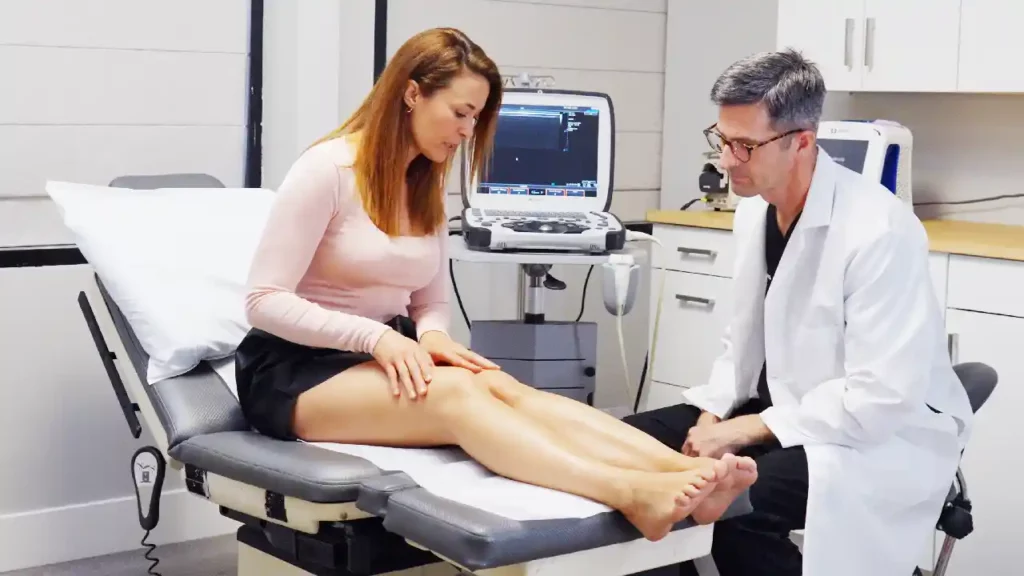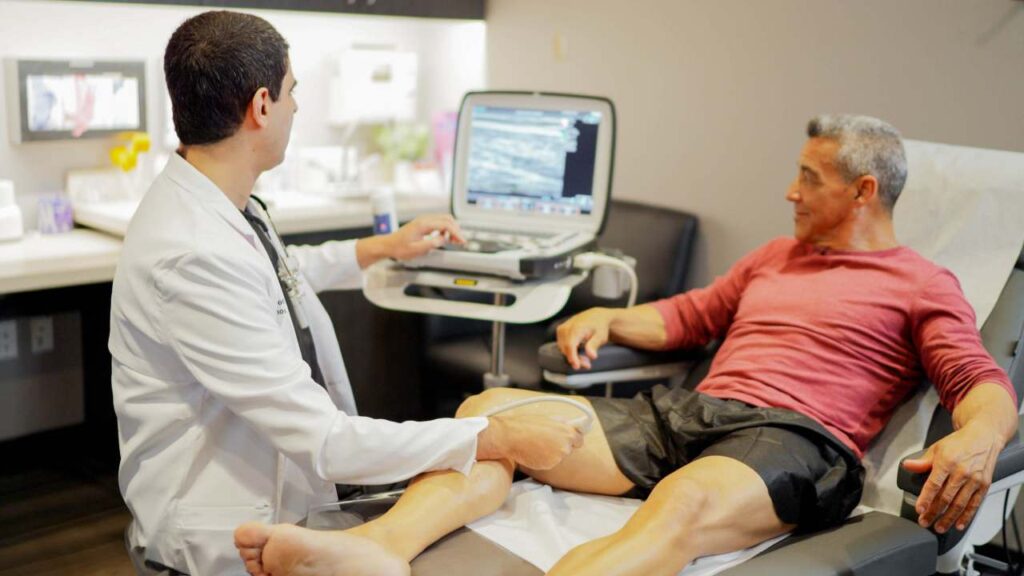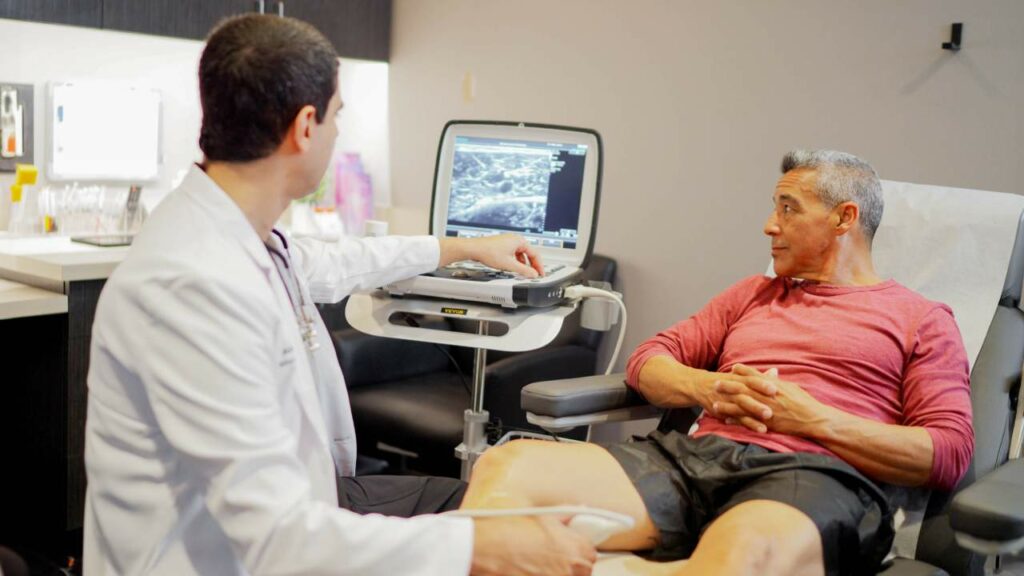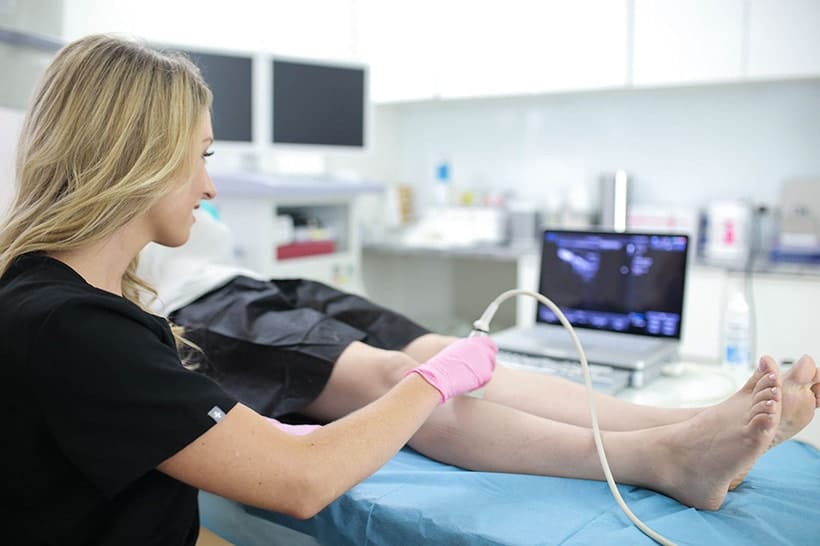1. Why Do Varicose Veins Cause Pain and Discomfort?
Varicose veins are pressurized, twisted, swollen blood vessels. They often result from backward blood flow that engorges the vein. This happens when a valve in a deep vein fails to close tightly. Varicose veins can produce pain, cramping, heaviness, swelling, fatigue, and restlessness in the legs. They can also cause painful issues like venous ulcerations, venous stasis dermatitis, and profuse bleeding. Often, patients don’t realize the correlation between their symptoms and their veins. Book an appointment with Harvard-trained vein specialists in California to relieve varicose vein pain. Read on to learn what helps.
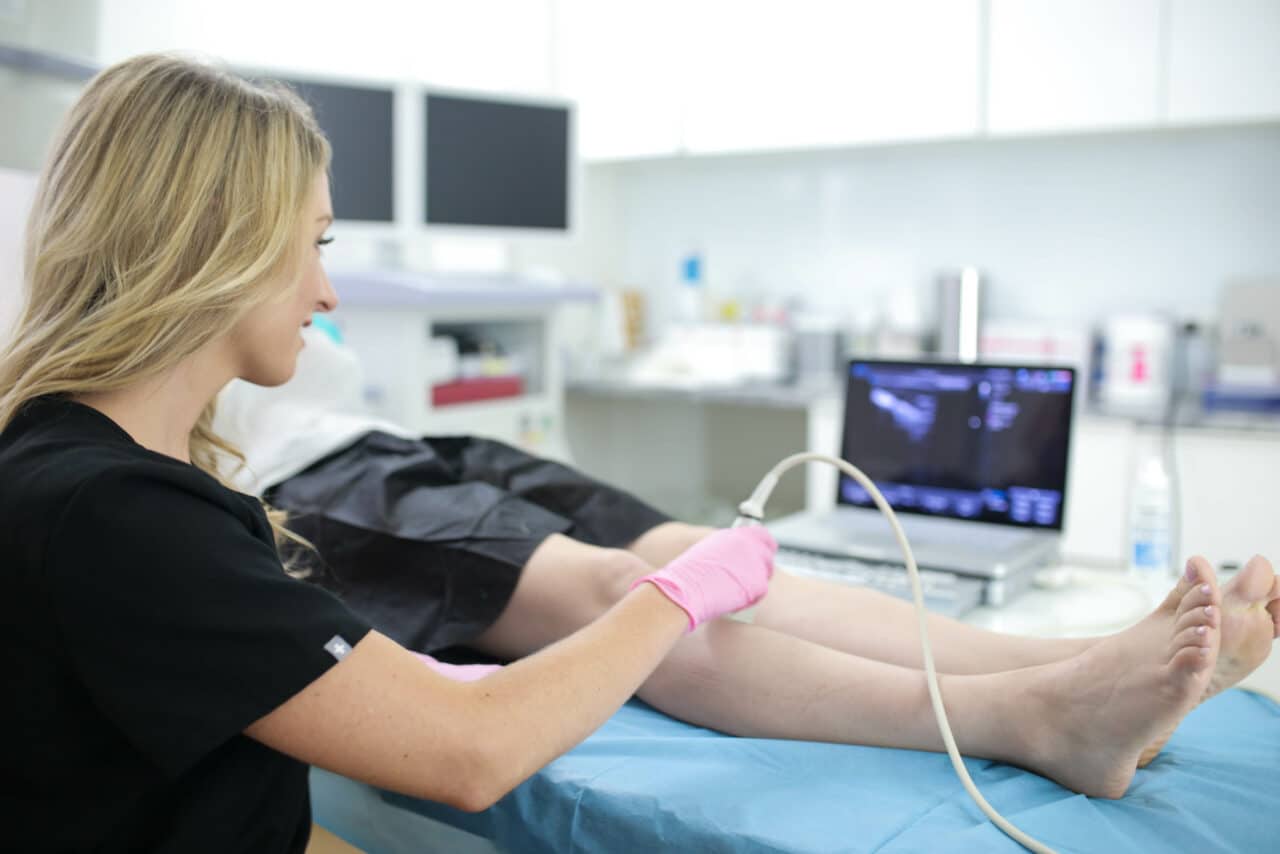
2. Are There Self-Care Options for Vein Pain Treatment?
If you have sudden pain, redness, warmth, or swelling near the vein, go to the emergency room to rule out a blood clot. If you don’t have red-flag symptoms, book a vein doctor to discuss your painful varicose veins. Varicosities can produce complications, so you must rule those out. Avoid using non-steroidal anti-inflammatories (NSAIDs) for pain relief until you ask your doctor. For some patients whose varicose veins bleed easily, NSAIDs can be dangerous. For pain relief while awaiting your appointment, here are some things to try at home.
- Elevate your legs above heart level for at least 15 to 30 minutes a day.
- Avoid long periods of sitting or standing without moving around.
- When seated for long periods, flex your calf muscles, or do calf raises or ankle circles.
- Avoid high-heeled shoes and tight shoes and socks to reduce swelling.
- Try compression stockings only if your vein specialist recommends them.
- Stay hydrated to optimize circulation.
- Exercise daily to help calf muscles pump blood out of leg veins.
- Maintain a healthy weight to reduce the burden on your veins.
3. Which Vein Types Require a Doctor for Pain Relief?
Home treatments reduce symptoms for some patients. But they don’t help everyone, and they don’t eliminate varicose veins or underlying causes. Most patients are better suited to a minimally invasive vein treatment than a lifetime of symptom management. Varicose veins run in families. They’re also caused by aging, weight gain, hormones, sedentary lifestyles, and jobs that require long periods of sitting or standing. Many of these things are beyond our control. So, the best solution is often to close the veins that aren’t working properly and restore optimal circulation. Varicose vein treatment and spider vein treatment are quick and easy at our outpatient vein centers in San Diego and San José.
4. What Type of Veins Requires Removal?
You can’t always tell which veins require removal by looking at them. Vein doctors use ultrasound imaging to look at deep veins and locate problems like faulty valves, blood clots, and Chronic Venous Insufficiency. But some veins provide visible clues that demand attention. These include veins with blood clot symptoms, veins with slow-healing or infected ulcerations, veins that bleed heavily when they’re scratched, and veins that inhibit your life.
That last category is broad. Some patients develop restless legs syndrome and insomnia from varicose veins. Others have a feeling of heaviness that makes daily activities exhausting. Some have significant pain and discomfort that affects their mental health. And many patients feel self-conscious about their varicose veins, which reduces their happiness, and even their wardrobe choices. If you have any of these issues, book a consultation with our caring vein doctors. We eliminate damaged veins and unpleasant symptoms in less time than your lunch break.
5. Can You Remove Veins From Legs Safely?
Varicose vein removal is safer than ever and rarely requires surgery. Minimally invasive vein doctors use tools like sclerotherapy, radiofrequency ablation, endovenous laser ablation, vein adhesives, and mechanochemical ablation to close the veins that cause problems. Instead of surgically extracting the blood vessel, doctors close the vein inside the body, causing it to disappear. These damaged veins aren’t useful to your circulation. The body has miles of veins, so doctors can simply redirect blood into a functional vein.
Minimally invasive vein removal is a low-risk procedure since it doesn’t involve general anesthesia, large incisions, or stitches. You can even go back to work after these vein treatments. They’re administered with tiny needles or catheters inserted gently through numbed skin. Research shows that minimally invasive vein treatment is safer, more affordable, and more effective than surgery, for most patients.
6. What Doctor Does Varicose Veins Removal?
For quick, gentle, and safe varicose veins treatment, see a board certified minimally invasive vein doctor. Most patients don’t need surgery. So, if you book a vascular surgeon, make sure they’re also trained in non-surgical techniques. Choose an accredited vein center with doctors who specialize in the vascular system. These are not requirements of vein centers, so always inquire about accreditation and what the doctors are certified in.
7. Is There a Varicose Veins (Venas Varicosas) Doctor Near Me?
If you’re looking for a varicose veins (en español, venas varicosas) doctor nearby, visit our award-winning vein centers in San Diego or San José, California. Dr. Carly Guthrie, Dr. Jasmine Koo, Dr. Walter Lech, and Dr. Billy Schoenfeld are all board certified, minimally invasive vein specialists with Harvard training.
8. Are Untreated Varicose Veins and Heart Disease Related?
What happens if you don’t treat varicose veins? Some won’t become problematic. But there’s no way to predict that. Most varicose veins produce symptoms, ranging from mild pain to life-threatening complications. When veins don’t work efficiently, it impacts circulation, which involves the heart, veins, capillaries, and arteries
Arteries pump blood away from the heart, so arterial diseases have an impact on heart disease. Veins pump blood back to the heart, so varicose veins don’t directly cause heart disease. However, many people with arterial diseases also have vein diseases like Chronic Venous Insufficiency. Ongoing research suggests a link between the two. See a vein doctor promptly if you have varicose veins, to assess your vascular health and prevent avoidable complications.
9. Will the Vein Place Assess the Risks of My Prominent Veins?
Don’t trust your vascular health to a cosmetic center for veins. Choose a board certified vein specialist at a vein center that’s accredited by the Intersocietal Accreditation Commission. These doctors have the diagnostic tools to look beneath the surface and treat your entire vasculature. Our vein experts can map your veins with ultrasound technology to find every faulty valve, clot, and problematic connection.
As mentioned, surface vein damage often stems from a malfunction in a deep vein that you can’t see through the skin. Choose doctors who know how to look for this, and also how to determine whether a prominent vein is actually varicose. Some healthy veins protrude in the hands, forehead, or feet, due to thin skin and low body fat in those areas. Treatment for these is optional.
10. How Soon Should I Seek Varicose Veins Pain Relief?
The sooner you seek varicose veins pain relief, the easier treatment will be. Our vein doctors use quick injections of sclerosants or cyanoacrylate glue, or they insert tiny tools to heat the vein with thermal energy. Each of these works quickly, gently, and permanently. Come see our California vein specialists before complications or permanent discoloration occur.
